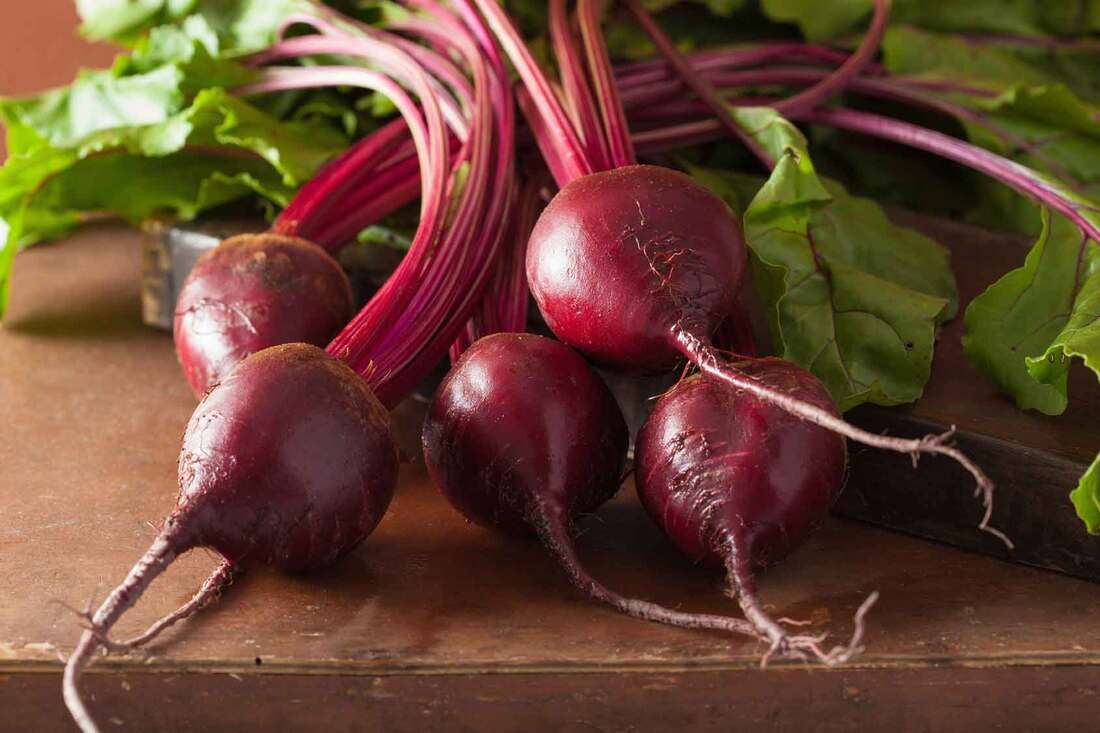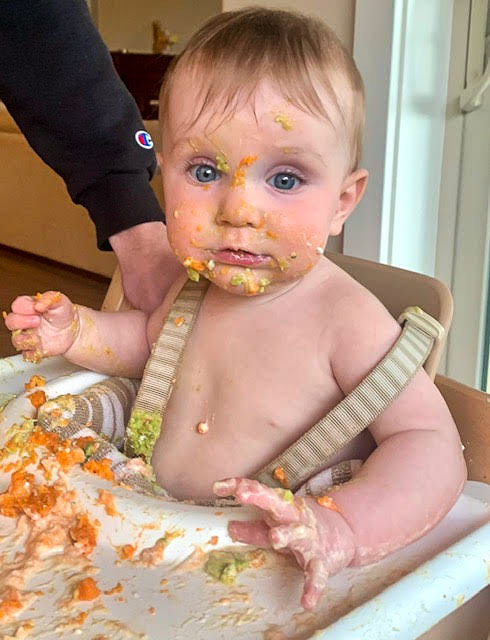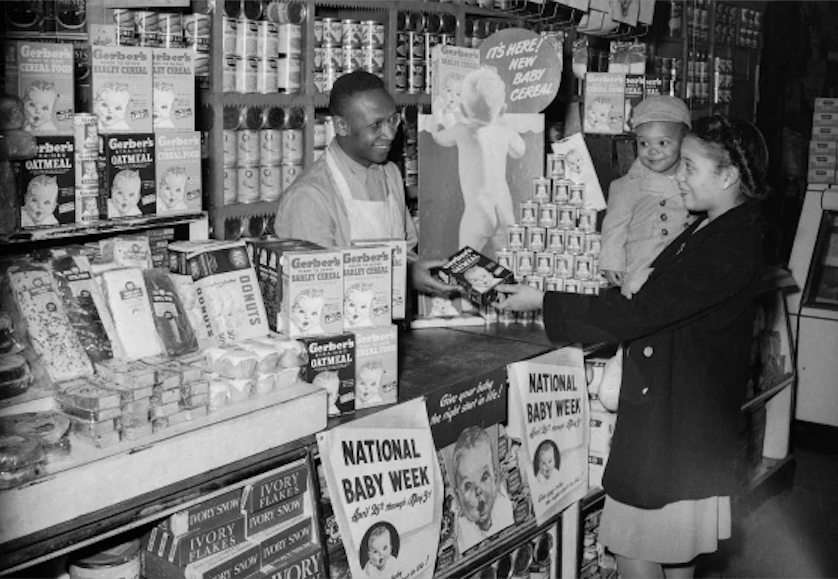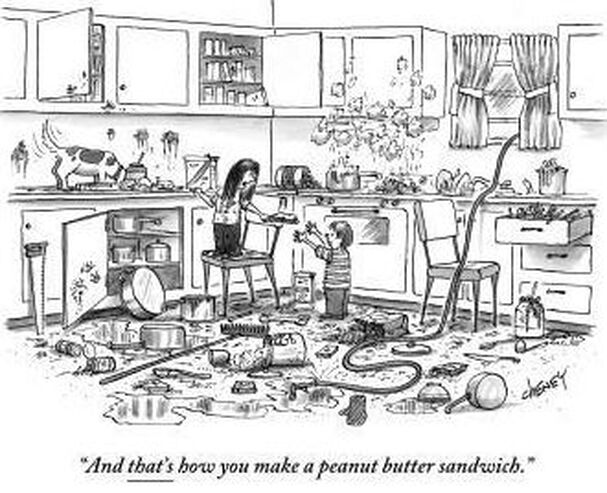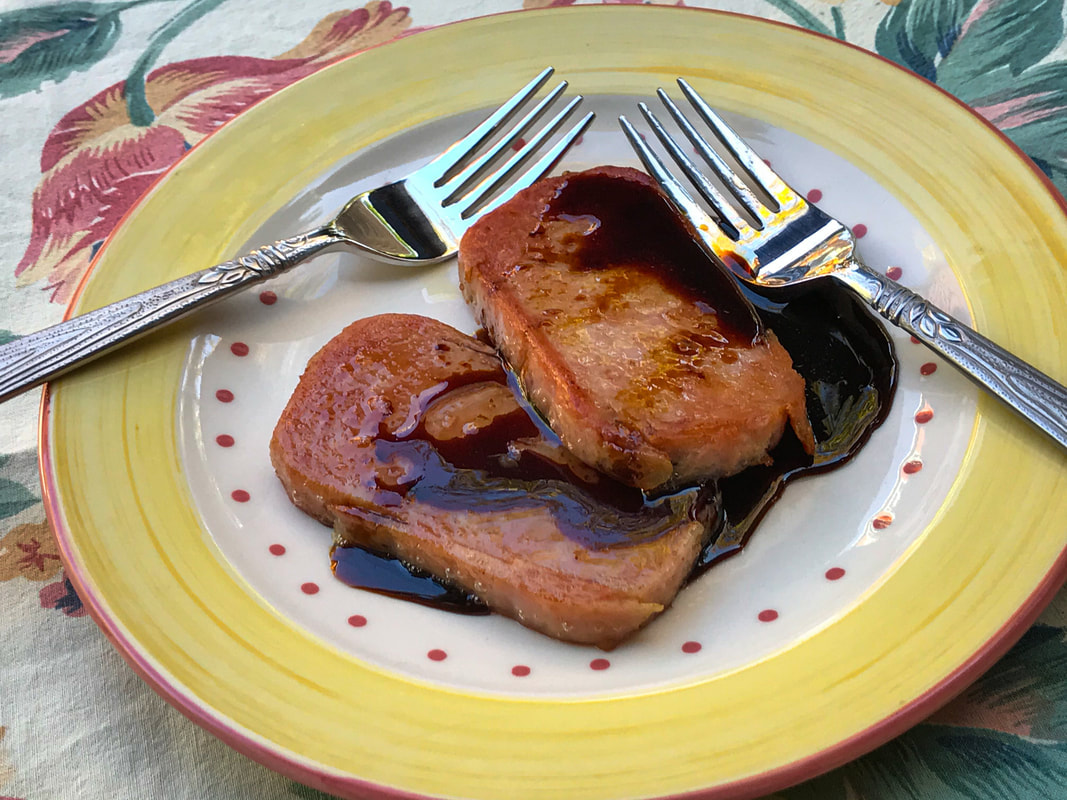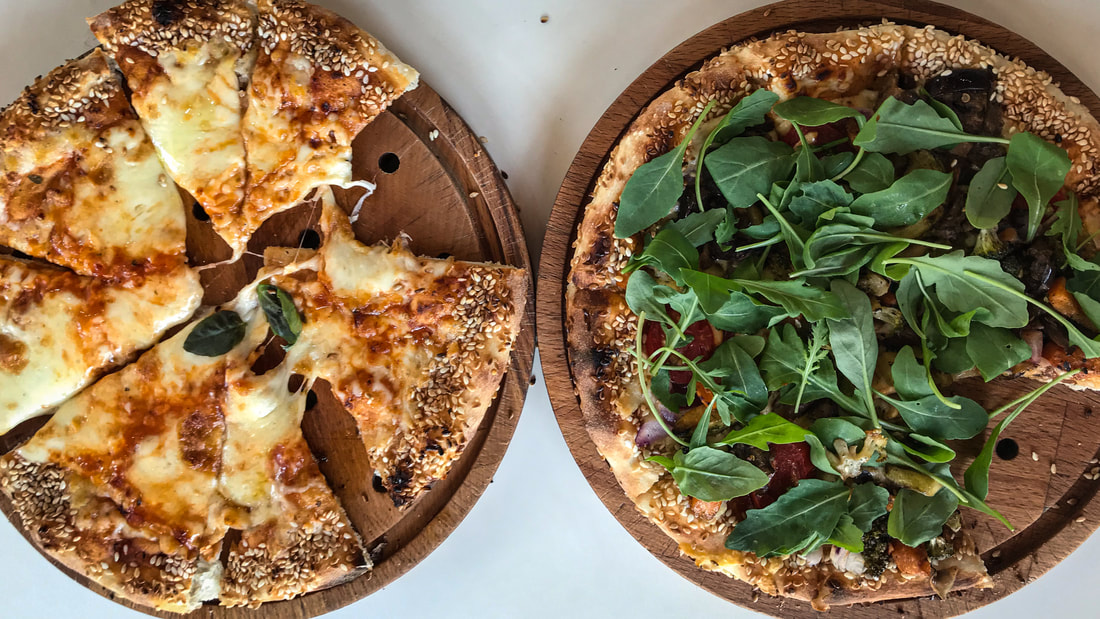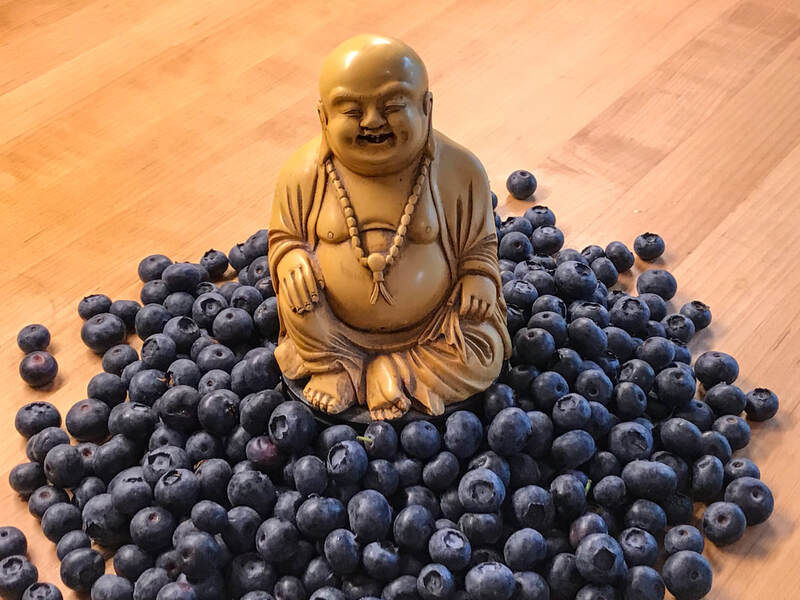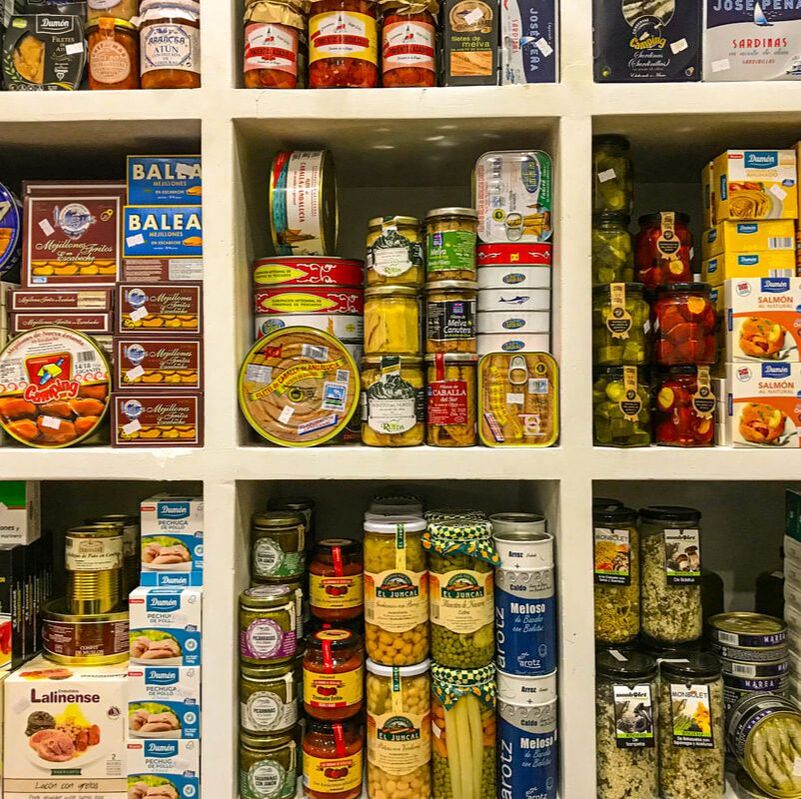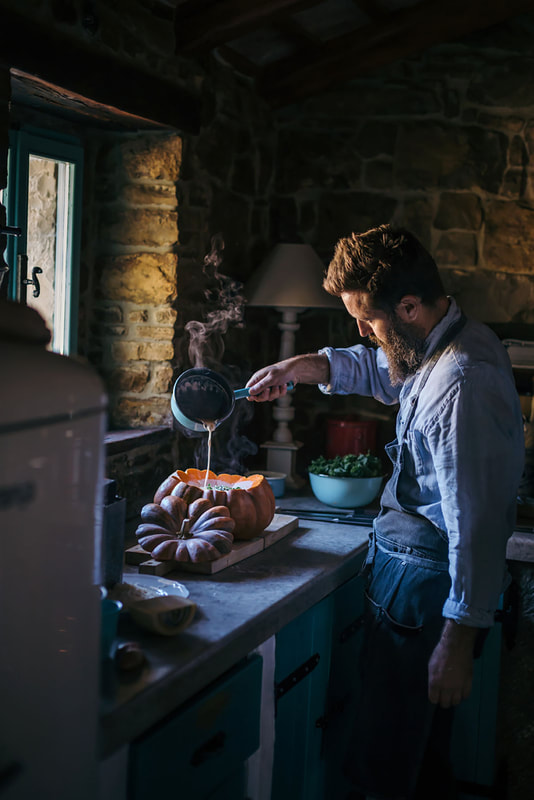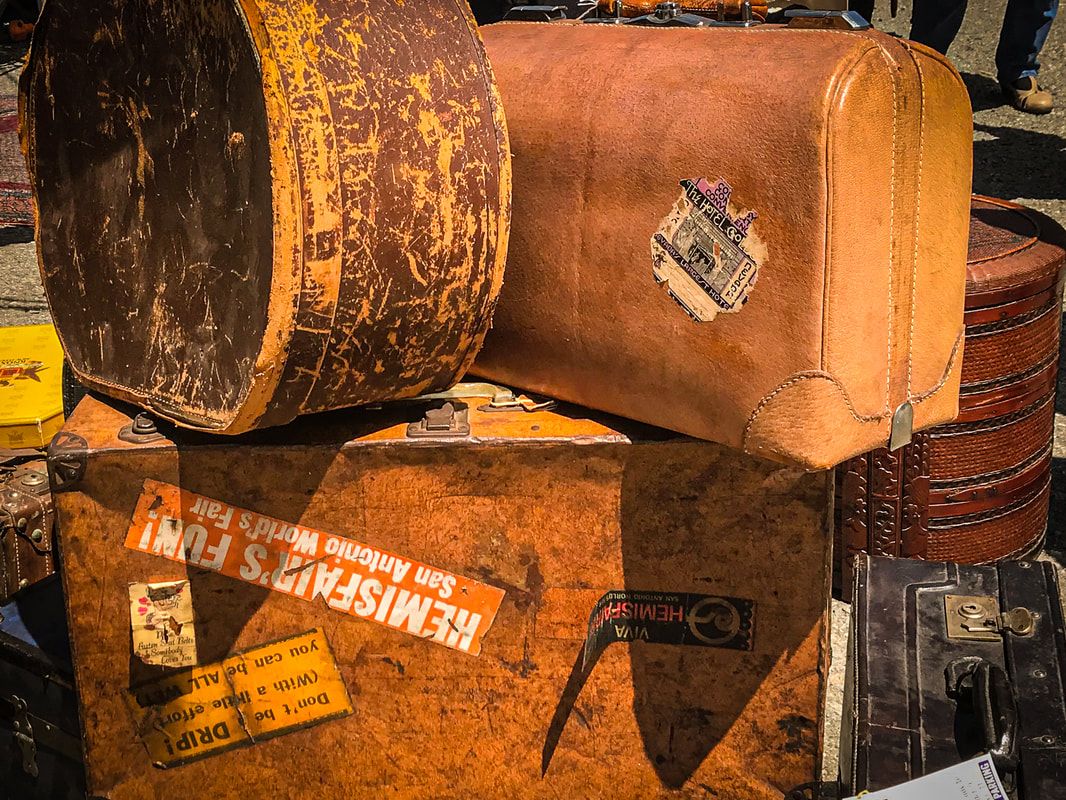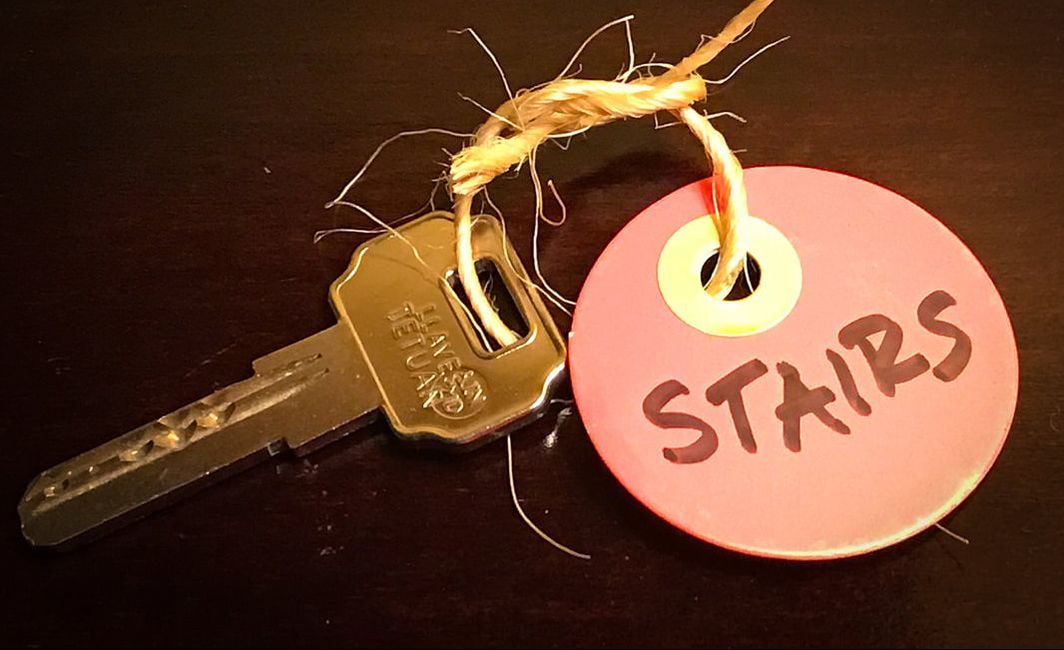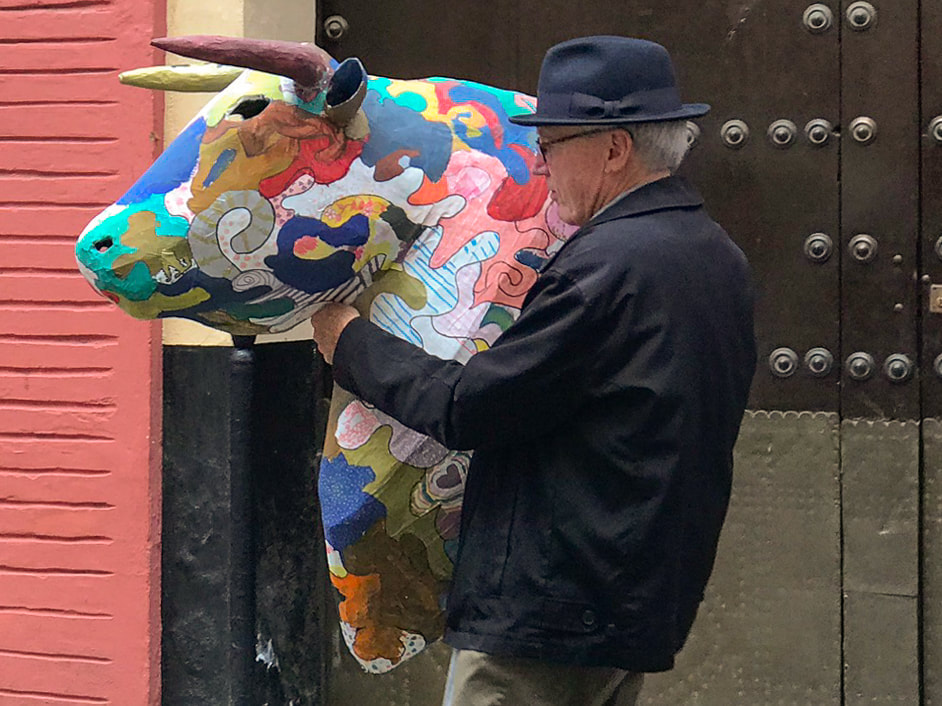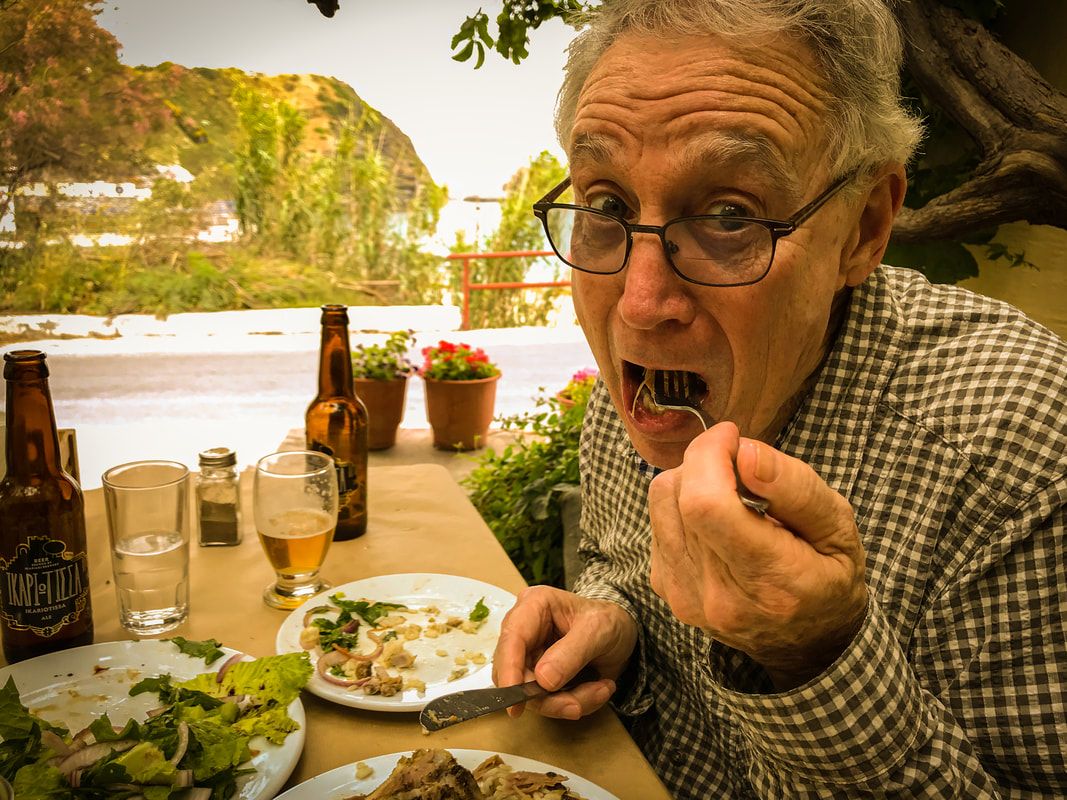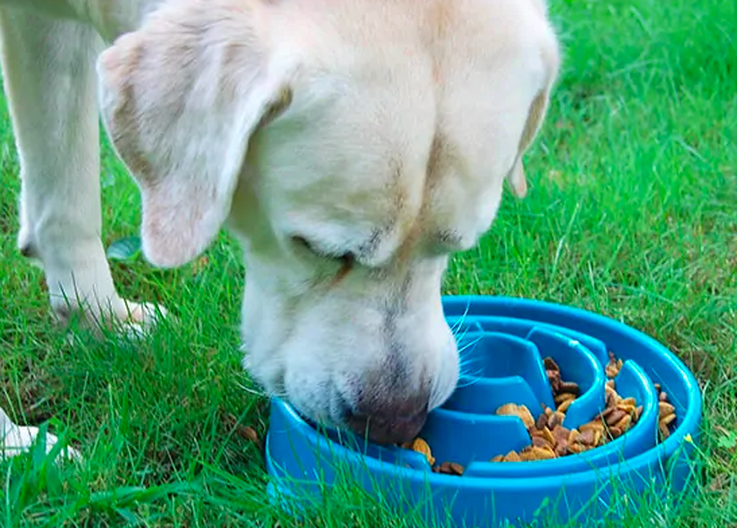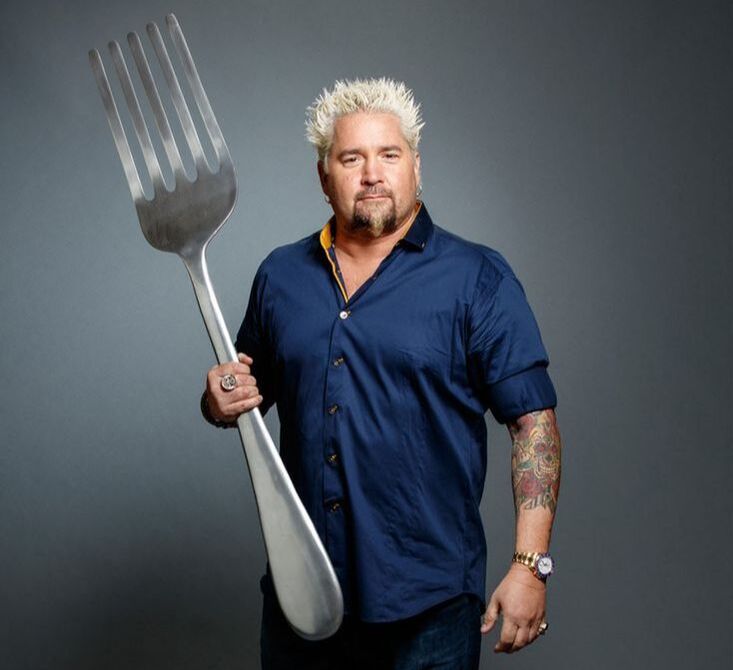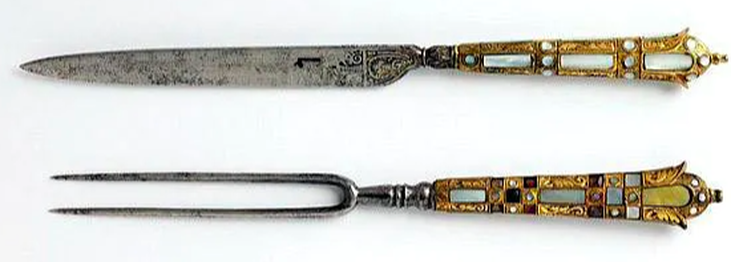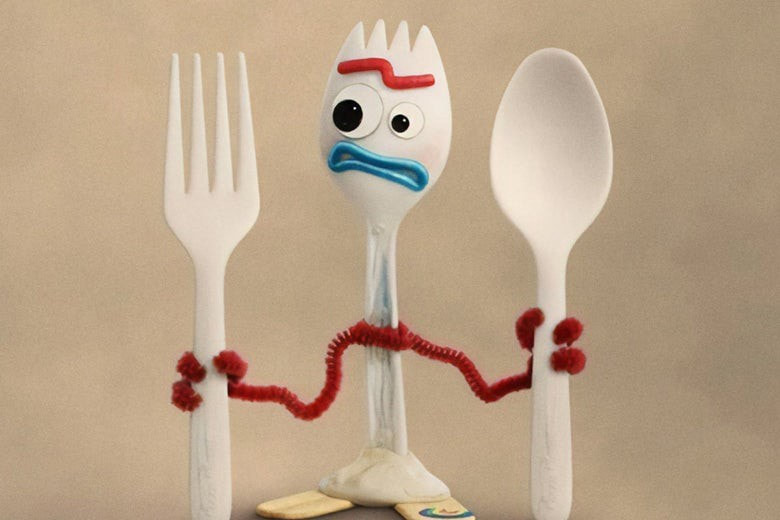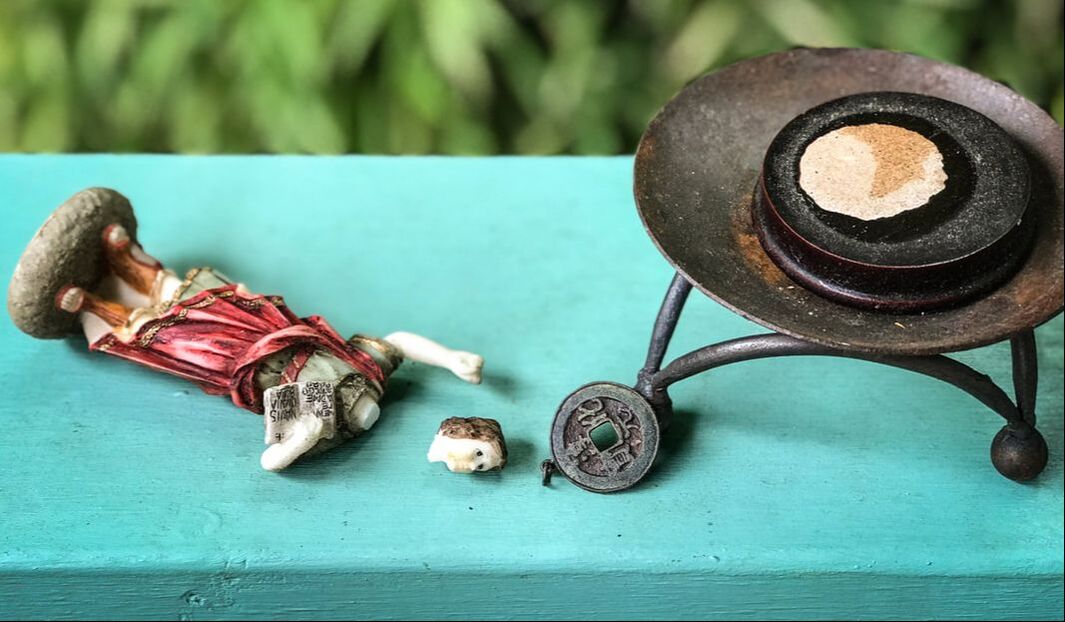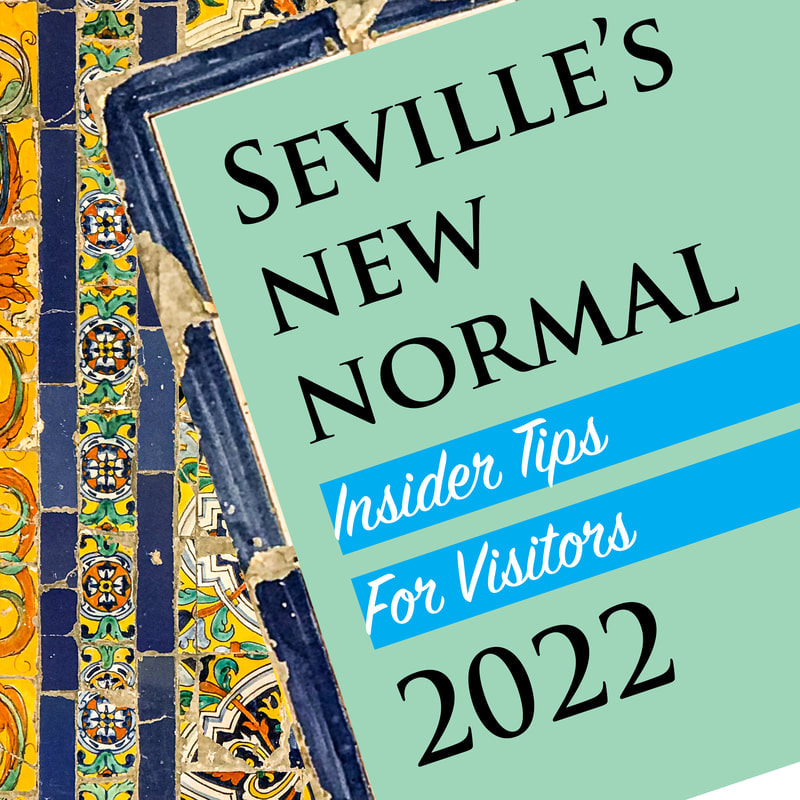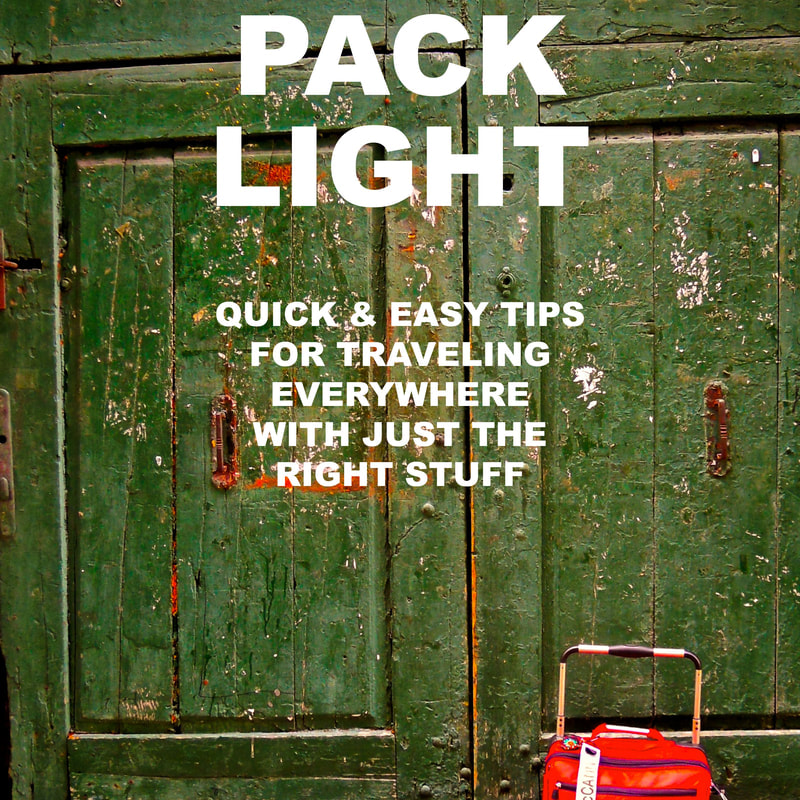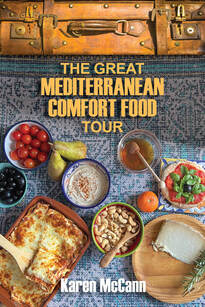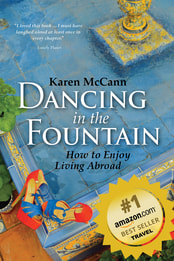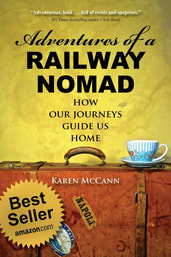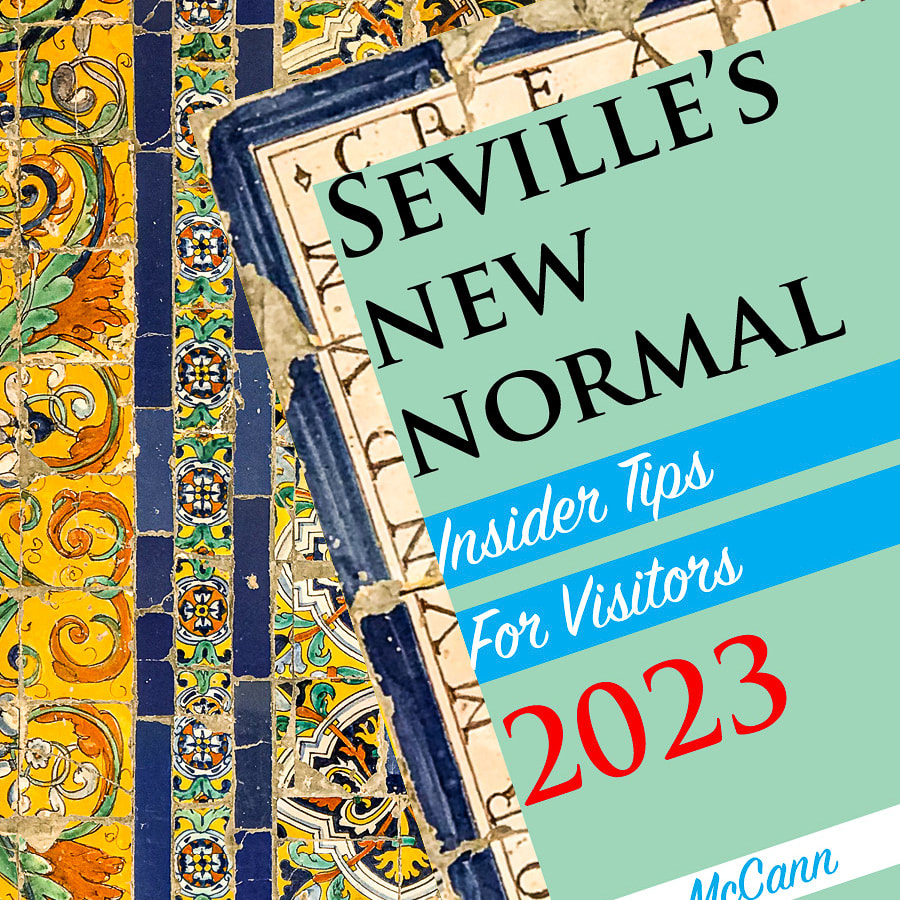|
If you ever want to reaffirm your sanity — something I feel the need to do on a fairly regular basis these days — go to the Yelp forum “What’s your worst picky eater story?” Rebecca H: I used to work as a Personal Assistant for a woman who was going through an "orange phase" meaning she would only eat things that were orange. As part of my job, I made her dinner three times a week. What a pain to try to come up with three all orange meals! Chang L: i like to eat mushy things. mushy cereal (i let the milk sit for at least 1/2 hr), mushy bananas (the one with a ton of brown spots), mushy cucumbers (i freeze them, then defrost them) Johnny L: Were you born without teeth? Deeeeeee: I think most people are born without teeth, Johnny. My point is — and stop me if you’ve heard this — people eat the darndest things. And they can get pretty fanatical about it. You won’t be surprised to hear pickiness usually starts during childhood. In her wisdom, Mother Nature hardwires infants and toddlers to be reluctant about experimenting with new tastes and textures. "If you're a caveman and you're two or three years old, it's not a great thing to be running around and eating berries off all the different trees," says Marcia Pelchat of the Monell Center, which researches taste and smell. Now scientists at Monell are learning our preferences probably start in the womb, when the foods your mother eats become part of your flavor repertoire long before you draw your first breath. My mom actually liked broccoli and so do I. Coincidence? Apparently not. “Obviously my mother liked ice cream,” Rich observed when I shared this factoid. For many, the fun train goes off the rails the moment solid fare appears. After six months of giving kids warm, cozy milk in soft breasts or bottles, suddenly we’re demanding they open their mouths so we can shove in metal implements loaded with mushy, overcooked peas. Is it any wonder they express their sentiments by flinging the green glop at the wall? “I was visiting my baby granddaughter,” a friend told me this week. “At mealtime, her mother set out little separate mounds of brightly colored food — mango, avocado, sweet potatoes — on her high chair tray. The child was encouraged to touch them, smear them around, play with them, taste them, and eat what she wanted.” “Does that get a little … messy?” I asked, picturing mango dripping from the ceiling and the dog happily lapping up mounds of sweet potato in the corner. “Well, yes. They have to put a tarp down under the high chair at every meal. But it’s the latest thing. It’s called baby-led weaning.” Not having kids or grandkids, I’m seemingly the last to know about this newfangled notion that kids will eat better all their lives if they start with real food and make their own choices. I grew up in the era of processed mush laced with sugar, salt, and MSG, baby food that’s still the norm in much of America today. Families in other parts of the world often stick with traditional fare. Italians, for instance, tend to start kids off with fresh vegetables and cheese drizzled with olive oil. Yes, I’ve already put in a request to come back as an Italian in my next life. Think rookie eaters will find it hard to stomach mozzarella, broccoli, and olive oil? Inuit kids begin their food journey consuming nuk-tuk made of seaweed, seal, and caribou. The Chinese give babies rice with fish, carrots, seaweed, eggs, and pork. In Kenya, the little ones join the rest of the family in chowing down on the sweet potato ngwaci. Japanese babies get rice with fish, yogurt, fruit, and vegetables. In other words, most kids get whatever mom and dad are eating. Until a hundred years ago, all kids ate and drank like miniature adults. "Coffee was extremely popular for children in the 19th century. And they sometimes drank alcohol, although that was getting less popular by then," explains food historian Dr. Helen Veit. In the early twentieth century, all sorts of “experts” began admonishing parents to do better. Baby food manufacturers insisted processed products were safer and more nutritious than fresh. Doctors advised parents to give kids milk — as much as a quart a day if they could afford it — for strength. To build them up further, parents were told to provide snacks. That’s when “children started rejecting food for the first time,” said Veit. “They no longer were hungry when they started dinner." That created endless arguments at mealtime — and an opportunity for Madison Avenue to join in the fun. Advertisers claimed the solution was kid-friendly foods — the ones being marketed directly to children during Saturday morning cartoons. I remember sitting with my brothers chanting the catchphrase “I want my Maypo!” We actually hated this maple-flavored instant oatmeal, but we couldn’t resist chanting the slogan in the obnoxious tone of the kid in the commercial. Thinking back, it’s a wonder any of us lived to adulthood. Lots of people old enough to know better develop quirky food fetishes. Elvis Presley loved the Fool’s Gold Loaf: an entire loaf of bread hollowed out and stuffed with a jar of peanut butter, a jar of jelly, and a pound of bacon. He was also a big fan of the honey-fried peanut butter and banana sandwich. I actually sampled one (although sadly, not with the King himself) and it tasted pretty good. But once was enough. Steve Jobs lived almost entirely on dates, almonds, and a huge number of carrots. "Friends remember him, at times, having a sunset-orange hue," writes his biographer Walter Isaacson. French author Honoré de Balzac used to drink fifty cups of espresso a night, saying, “Ideas begin to move like battalions of the Grand Army of the battlefield. And the battle takes place." Unfortunately, the battle was too fierce even for his strong constitution. He died of caffeine poisoning at the age of 51. The history of food madness goes on and on. The fact is, nobody makes dietary choices based solely on logic. My college roommate ate nothing but purple food because she believed it had the best karma. I can only assume this was a rumor started by all the ingredients of other colors, as a way to avoid winding up on the dinner plate. However whacky our choices, one of the great pleasures of adulthood is being able to make our own decisions about food. I don’t know what the karma rating is for mashed, overcooked peas, but I can tell you this: anybody who tries to shove a spoonful in my mouth is just asking for trouble. You have been warned. FYI I'm heading off to a family reunion in the mountains and won't have any internet access for a while. I'm not sure when or whether I'll put out a post next week. But you can be sure I'll come home with lots of stories to tell. YOU MIGHT ALSO ENJOY Well, that was fun! Want more?
Sign up to receive updates when I publish new stuff. LEARN MORE ABOUT FREE UPDATES HERE
14 Comments
I remained in blissful ignorance of the catastrophe until just after checking into the hotel. Dazed by the long drive and stunning heat, I just wanted to drop off our stuff, grab a little lunch, and dress for our friends’ country wedding. Rich walked around to the back of the car, popped open the hatchback, and peered inside. “Where’s your suitcase?” “What? It’s right there.” No, it wasn’t. There was an awkward pause. I clearly recalled him saying, “Would you like me to take your bag out to the car?” To which I replied in the affirmative. I’d assumed he was volunteering, but had it been a rhetorical question, along the lines of “Would you like to taste test chocolate for a living?” In the bustle of closing the house and throwing things into the car for the trip, I hadn’t given my suitcase another thought. And clearly neither had he. An oversight that was obviously coming back to haunt us now. It wasn’t a complete disaster. My dress was on a hangar in the back seat. And having traveled luggage-free before, I knew I could survive without my nightgown and other small luxuries. But it was a bit daunting to think of showing up for a wedding without jewelry, decent shoes, a handbag daintier than my baggy satchel, and a sweater (because California nights always turn cool). My first response? I laughed. And then I said, “Looks like we’re going shopping!” But where? On our brief drive through the small town of Cloverdale, California, all I’d seen were a few ancient diners and a Dollar Store. Rich drove along Cloverdale Boulevard — slowly, so we didn’t blink and miss anything — and I spotted a sign saying “Cloverdale Retail Therapy.” Inside I found the kind of general store where you can buy scented candles, cowboy boots, beach bags, and — yes, thank the Lord — clothes and jewelry. The proprietor, quickly grasping the nature of the emergency, threw herself into the hunt and helped me find the right jewelry, purse, and sweater. I didn’t think cowboy boots would do my outfit any favors, so I resigned myself to wearing my grubby espadrilles. As it turned out, the wedding was not only the most glamorous I’d ever been to, it was the most glamorous I’ll ever go to. My friends had purchased a nineteenth-century power plant which had been converted into a spectacular home. There was enough champagne to float the Spanish armada. The food was divine. To make sure we didn’t take ourselves too seriously, we were all issued kazoos to provide a ragtag version of the Wedding March. I wondered what the folks who’d built the power plant would think if they could see it now. Repurposing old buildings is an art, and it always warms my heart to find one transformed into something so wonderful. We’re going to be seeing a lot more of this in the years ahead as cities struggle to find new uses for offices vacated by remote workers. Right now San Francisco has 18.7 million square feet of empty office space to play with, and I hope some of the solutions are as creative as these. I’ve never had occasion to repurpose a whole building, but a lot of my home furnishings come from flea markets, yard sales, and second-hand shops. I'm always on the lookout for unwanted treasures that can be saved from the landfill and adapted to new service — the more unexpected the better. Now isn’t that more exciting than just going down to Ikea and buying stuff that looks like everyone else’s? To be fair to Ikea, they are doing their best to keep their products out of the landfill, starting with their Buy Back & Resell program. If you have fully assembled, fully functional Ikea furniture you no longer want, they’ll take it off your hands and pay you between 30% and 50% of the retail price, depending on the condition. They’ve been doing this in the UK and Ireland for a while, and in April they launched the program in 37 US stores. Their goal is to become a “circular” business by 2030 — that is, to produce all products with materials that are 100% recycled, remanufactured, refurbished, or reused. Amen to that. I’ve certainly bought my share of Ikea furniture and admire its practicality, but I generally prefer home furnishings with more character. That goes for the garden, too. In the summer of 2020, Rich and I used our quarantine time to clear out an overgrown patch of the yard for a seating area. To screen it from the narrow strip of land separating our house from the next, we wanted a slender door. After a massive online search, Rich found one that had originally graced a children’s bathroom in a mid-century Midwestern school. I added a decorative toper I found on Etsy, sanded and primed the door, painted it, varnished it, and figured my job was done. To my dismay — and considerable annoyance — the paint began bubble and peel almost at once. Repeated attempts at repainting only seemed to make it peel faster, until by this spring it looked as if something inside was trying to claw its way out. When a woodworker friend came to lunch, I showed him the disaster. He exclaimed, “Karen, you could easily fix this.” I sincerely doubted it, but I listened with interest until he got to the part about removing the inset plywood panels that were absorbing too much water and retrofitting new wood in their place. At that point, it was clear the project was way beyond my meager skills, and my eyes glazed over. Rich, however, embraced the project with unbridled enthusiasm. “And think of all the money we’ll save, not having to buy a new door.” Yes, you know where this is going. So far he’s purchased three bottles of stripper to remove 60 years’ worth of yellow, green, orange, blue, gold, brown, and white paint, a cement stripper wash, five disposable tarps, six KN95 face masks, a box of disposable gloves, two clamps wide enough to encompass the width of the door, sandpaper, epoxy, something that looks like pressed tin but is made of a synthetic material, four buckets, three bags of rags, and some polyurethane sealer. He’s been working on it for two months and is just now down to bare wood. I suspect, eventually, it will be finished, and the sweat equity will make the little door all the more precious. In much the same way, my Cloverdale accessories will always have a special place in my wardrobe, thanks to the frenzied effort that went into finding them. “The things we love,” said Thomas Aquinas, “tell us what we are.” Apparently Rich and I are all about not-quite-lost causes and loony backstories, and I wouldn’t have it any other way. Have you ever salvaged objects, buildings, or potential social disasters? Tell me your story in the comments below. YOU MIGHT ALSO ENJOY
Well, that was fun! Want more? Sign up to receive notices when I publish new stuff. LEARN MORE ABOUT FREE UPDATES HERE “When you come to a fork in the road, take it.” Yogi Berra My sister-in-law’s new rescue dog — whose previous life was pretty grim — arrived with an ingrained habit of eating so fast it made her ill. Now Sophie gets her kibble in a slow feeder bowl designed with special ridges and pockets that require hunting for every bite in a sort of maze. These days her meals are considerably more leisurely and easier to digest. No, I’m not suggesting you buy a slow feeder for your kids or grandkids. Sadly, the human tongue just isn’t up to the task. But it’s apparent that when left to our own devices, we humans have a Sophie-like tendency to wolf down our food. One of the major tasks of civilization has been to slow down our meals so we can savor them properly. Until the mid-sixteenth century, most Western Europeans were perfectly happy with what the French call service en confusion, platters of foods tossed helter-skelter on a table while everyone grabs what they wanted and eats with their fingers. Like modern pizza nights, only with messier food and no napkins. When forks burst on the scene, this newfangled contraption was viewed as the devil’s implement. I mean, just look at the shape — straight out of Hades, right? Early efforts to introduce forks went down in flames. In the year 1004, Greek Princess Maria Argyropoulina shocked the civilized world and her bridegroom, the son of the Venice Doge, by using a fork at her wedding. She had her eunuchs cut up her food and then she daintily lifted each bite to her mouth with this strange pronged instrument. The wedding guests gasped, scandalized. “God in his wisdom has provided man with natural forks—his fingers,” said one irate clergyman. “Therefore it is an insult to him to substitute artificial metal forks for them when eating.” When the princess died of plague two years later, Saint Peter Damien told everyone who would listen it was the Creator’s response to the fork incident. “This woman’s vanity was hateful to Almighty God; and so, unmistakably, did He take his revenge. For He raised over her the sword of His divine justice, so that her whole body did putrefy and all her limbs began to wither.” Yikes! As you can imagine, that put a damper on fork usage, and for nearly 500 years people continued eating with their fingers and wiping them on their clothes in god-fearing righteousness. It was the Italians who first broke ranks, embracing the fork’s ability to gather up pasta more efficiently. The French continued to turn up their collective noses at these unholy utensils. According to popular legend, all that changed in 1533 when the fourteen-year-old Florentine princess Catherine de Medici married the future King Henry II of France. She supposedly brought along several Italian chefs and immediately had everyone cooking with garlic and truffles, and picking up forks to eat manicotti and lasagna. That's so not how it happened. For years Catherine was largely ignored by everyone who mattered because her husband was so besotted with his mistress, Diane de Poitiers, that his teenage queen was pushed into the background. Catherine didn’t bring any Italian chefs with her and was probably too busy trying to survive and, if possible, get pregnant with a royal heir to worry overmuch about what was happening in her kitchen. The Italians in Catherine's entourage, nostalgic for home cooking, found a surprising number of kindred spirits at the French court. In those days, the French were often in Italy engaging in minor warfare with various city-states. In between all the fighting, laying siege, pillaging, looting, and occasionally running for their lives, the French sampled the local food. They liked what they found and brought back fresh ideas, such as serving meals in courses, baking with butter — once ignored as “poor people’s fat” — and eating mushrooms. Catherine’s dowery included several dozen dinner forks crafted by the great Italian silversmith Benvenuto Cellini, and these gradually appeared on the dinner table. The French courtiers teased each other mercilessly over the amount of food they spilled learning to use the goofy new implements, but they eventually got the hang of things. Soon fashionable guests were showing up at dinner parties carrying a cadena, a specially made box (like those of dueling pistols) containing their personal fork and spoon. The British held firm, continuing to despise forks as unmanly, proudly eating with their fingers for another 100 years. Then in 1633 Charles I declared, “It is decent to use a fork.” History buffs will remember Charles as the controversial king who ran afoul of everybody and was beheaded for treason, ending the monarchy and making England a republic. He is generally viewed as among worst kings ever inflicted on the realm. But a sound man on forks. Since then forks have been showing up everywhere and taking on all sorts of shapes and functions. The Victorians went overboard creating special versions for spearing lettuce, fish, mangos, olives, pickles, and bread in a basket, to name but a few. The late nineteenth century sprang the spork (half spoon, half fork) on an unsuspecting public. Sporks became popular in the 1960s, and everyone attempted to figure out how to manage this awkward hybrid, which could stab your tongue if you tried to sip soup, yet had such stubby tines eating spaghetti was a hopeless struggle. Nowadays sporks are most often found in prisons, school cafeterias, and budget airlines. How are forks likely to fare in the future? Some suggest they may be on the verge of extinction. “The rise of casual dining, convenience foods and drive-throughs means that for the first time since the 1500s we regularly eat complete meals with our hands,” observes food writer Chad Ward. “Forks and knives may again become the source of confusion and social unease.” Say it ain’t so! Because if the fork has given us anything (besides fewer stains on our clothing and tablecloths) it's a sense of eating as an occasion worthy of thoughtful preparation and leisurely consumption. We don’t need a slow feeder bowl, or a staff of eunuchs peeling our grapes, to dine in civilized manner. All we have to do is follow the lead of Princess Maria Argyropoulina, Catherine de Medici, and other pioneers who had the courage to buck prevailing trends and pick up a fork at the dinner table. Oh no! Our statue of San Pancracio, Seville's patron saint of health, suffered an accident this week, possibly knocked over by the neighbor's cat. At the same time, Rich had a rebound, testing positive again for Covid. Coincidence? That's for future historians to decide. San Pancracio has now been glued back together and Rich is testing negative again. Whew! Well, that was fun! Want more?
Sign up to receive notices when I publish new stuff. GET MORE FREE UPDATES HERE I do my best with technology, but occasionally readers report snags when signing up for the blog or stop getting notices each week, usually due to spam filters. If that happens, send me an email and I'll fix it. [email protected] |
This blog is a promotion-free zone.
As my regular readers know, I never get free or discounted goods or services for mentioning anything on this blog (or anywhere else). I only write about things I find interesting and/or useful. I'm an American travel writer living in California and Seville, Spain. I travel the world seeking eccentric people, quirky places, and outrageously delicious food so I can have the fun of writing about them here.
My current project is OUT TO LUNCH IN SAN FRANCISCO. Don't miss out! SIGN UP HERE to be notified when I publish new posts. Planning a trip?
Use the search box below to find out about other places I've written about. Winner of the 2023 Firebird Book Award for Travel
#1 Amazon Bestseller in Tourist Destinations, Travel Tips, Gastronomy Essays, and Senior Travel
BLOG ARCHIVES
July 2024
CATEGORIES
All
|
